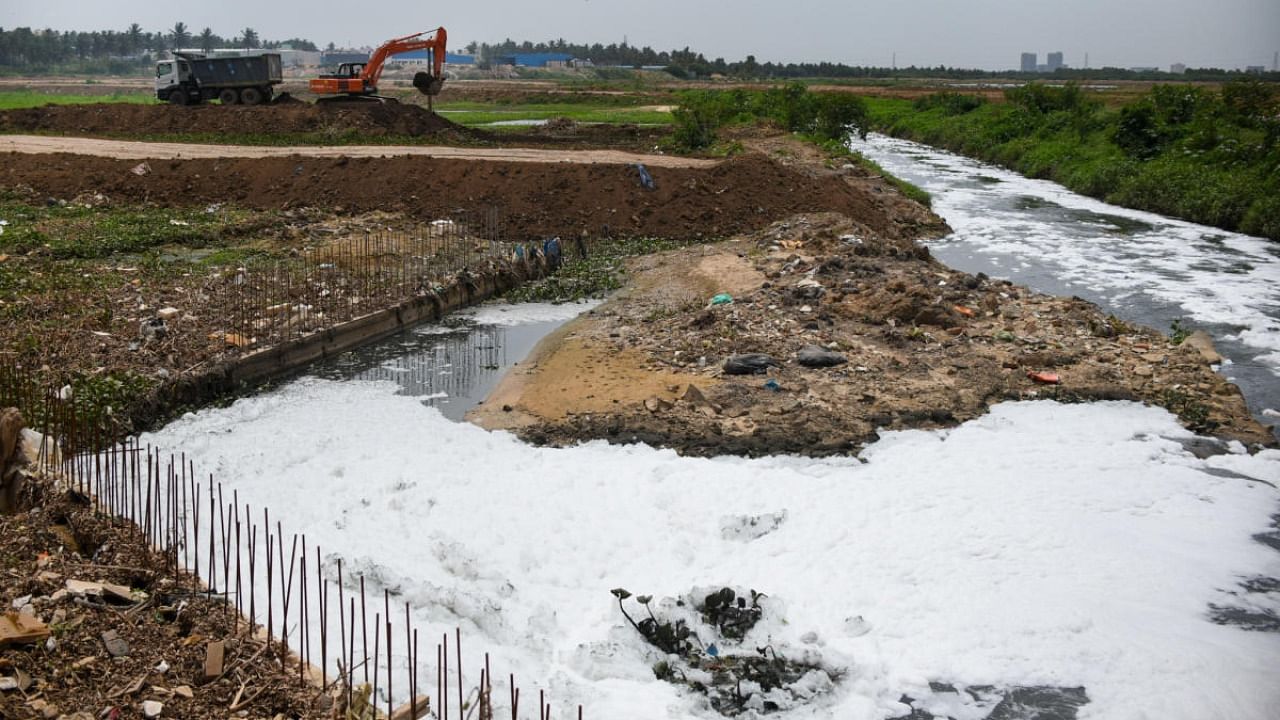
Just two decades ago, Rampura in east Bengaluru — which is just around 18 km from the city centre — was a thriving fishing village frequented by tourists and locals alike.
As the IT city started growing exponentially, it witnessed the slow death of many lakes, including the sewage-fed Rampura lake, destroying both the fish habitat and the livelihood of fishermen.
R Srinivas, a 34-year-old fisherman who lives just next to the lake, says the water body has turned into a cesspool covered with hyacinth.
He, along with his friends, made a living from farming and catching fish, first in Kaikondrahalli lake and later in Saul Kere lake.
After both these lakes started reporting fish kills, he decided to travel further away to Electronics City, where he continues his family occupation.
Lack of fish in Rampura lake, however, is not the only problem.
The 187-acre lake, which is a part of the Hebbal valley and a ‘Bellandur lake in the making,’ has lost almost all characteristics of a water body.
It is filthy, full of garbage and heavily encroached upon. It has become a favourite breeding ground for mosquitoes.
Migratory birds are giving the water body a miss these days. There is now unbearable stench from the lake, forcing many residents to keep their windows closed permanently.
In other words, the water body and its surrounding areas are in a total mess.
Cut to 2022, the lake, which is also called Huvinane, Rampura-Kalkere and Margondanahalli lake, is showing signs of hope — a hope for revival.
Rs 35-crore project
When DH visited the lake, six JCBs were seen clearing the silt and the mud to increase the water storage capacity.
Workers were also seen digging the edges of the ground to lay a sanitary line that will be connected to the yet-to-be constructed sewage treatment plant, proposed inside the lake boundary.
Locals say the work was going on in full-swing last year, but has slowed down now.
Among the works included in the Rs 35-crore contract are: de-silting, strengthening the main bund, forming the wetland, creating an island and a bird’s nest, constructing sewage diversion drains, a silt trap and footbridge in two places.
The project includes fencing the lake, building toilet blocks and a security cabin. Most of these works are already underway.
After the restoration, BBMP believes the water storage capacity of the lake will increase from the present 9.45 lakh cubic metre (cum) to 15 lakh cum (1 cum is equal to 1,000 litres).
While the present average depth of the lake is just 1.5 metres, the civic body has proposed to increase it to 2.5 metres.
The rejuvenation of this lake, which connects Kalkere lake in the upstream and Yele Mallappa Shetty lake in the downstream, is crucial as it can mitigate chances of flooding in the upstream regions of the valley such as Hebbal, Rachenahalli and HRBR Layout by holding more water.
While the rejuvenation work has given hope to 50,000-odd residents, many expressed concerns over the slow pace of work and BBMP’s failure to clear encroachments.
The inlet, which receives water from Kalkere lake, is found to be frothing, indicating the poor quality of water treatment upstream.
“I had stopped jogging near the lake as the smell was unbearable. After a lot of protests, the BBMP took up the work two years ago, but the work is going on slowly. There are a very few workers on the site now,” Mithun Muralidhar, who lives in an apartment next to the lake, said.
He is worried the work will drag on for at least three years.
A few residents want the BBMP to be more transparent in its plans.
“There is a huge gap between the sewage diversion drains and the road. We suspect the empty space, which is within the lake, will soon be encroached upon. Many temporary shelters have come up around the lake, but officials have not taken action,” Dr Keshava Murthy, a political activist, said.